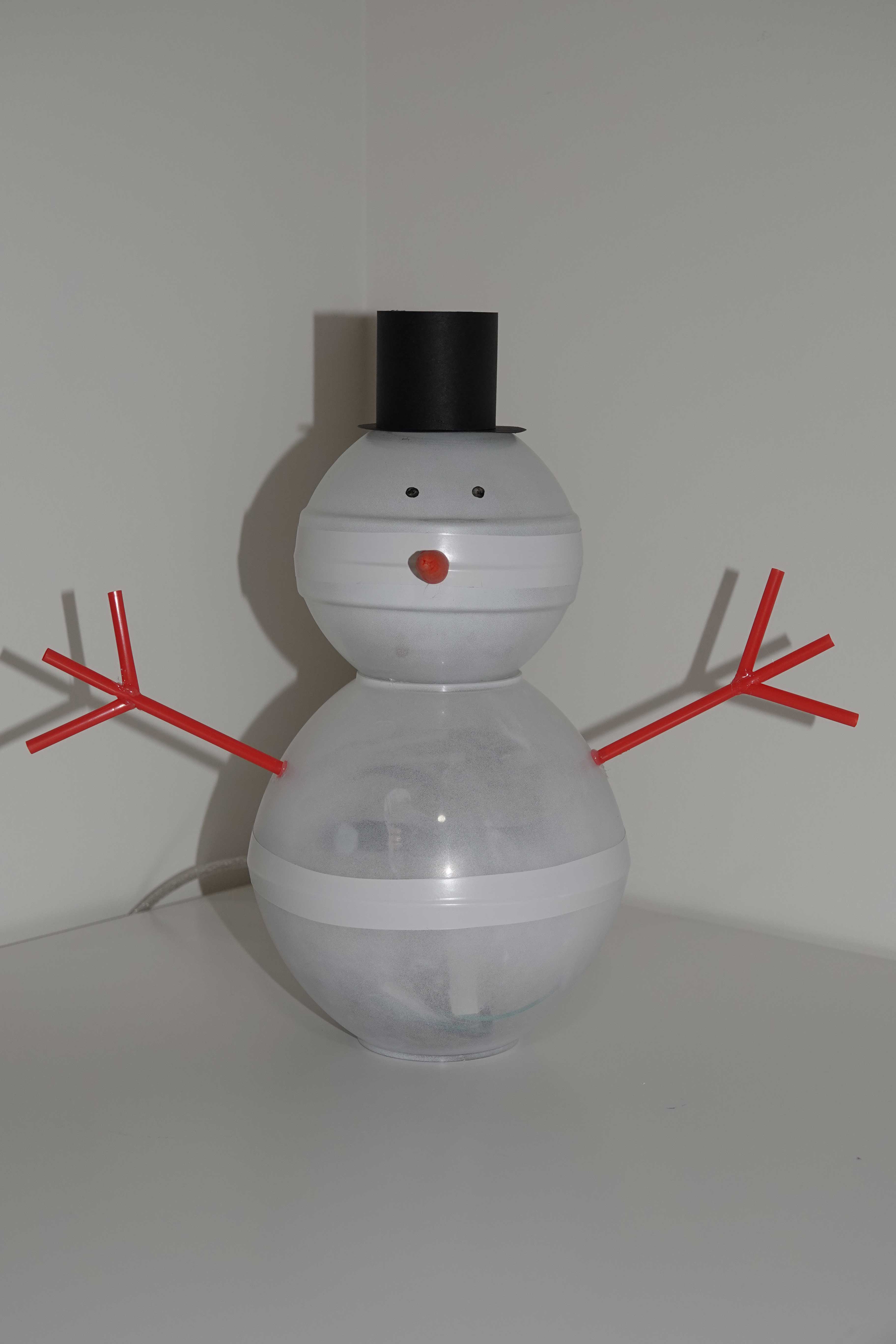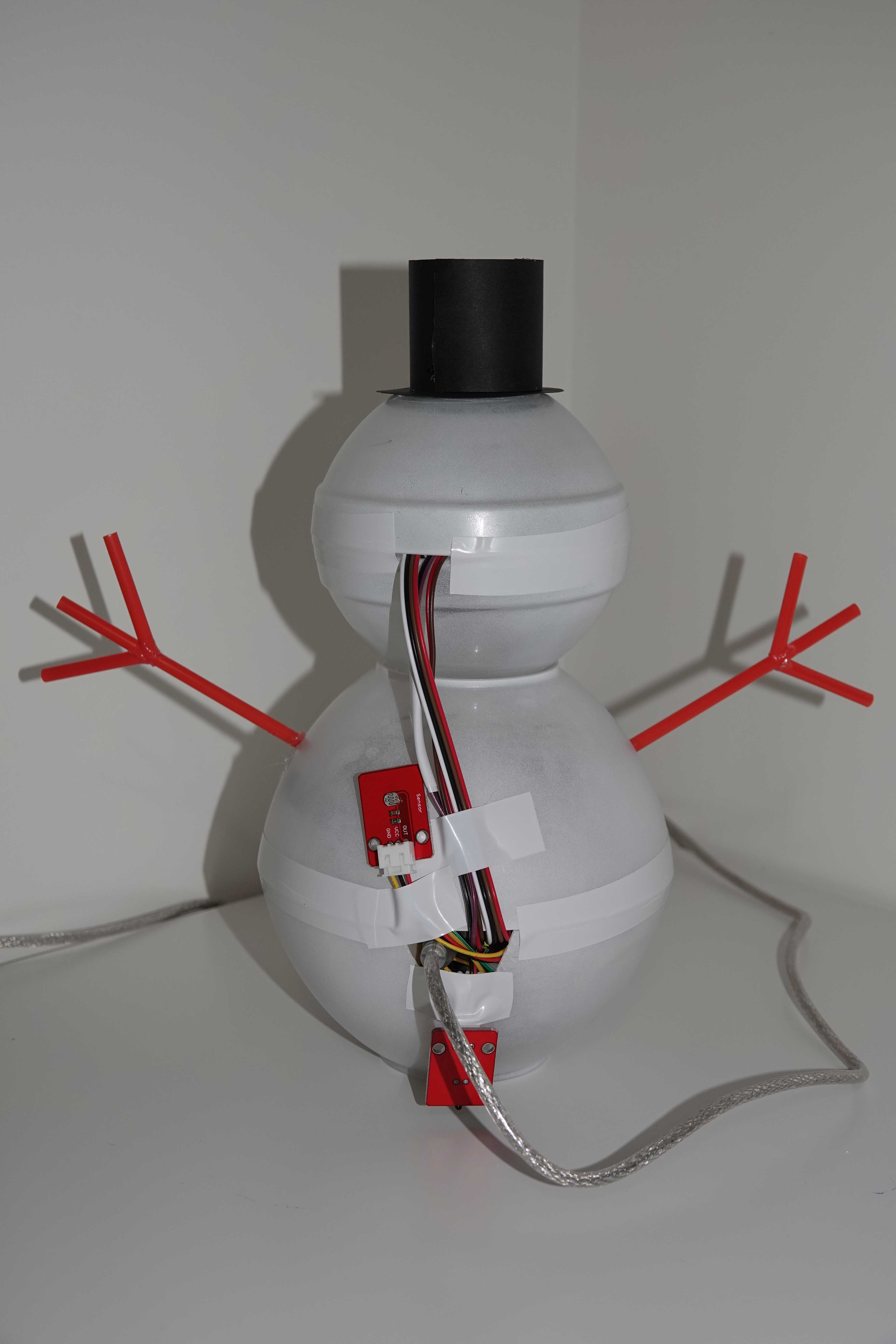Intended Concept
Emily is an energy-saving product that monitors the users' energy consumption and alerts the users of any misuse. It is intended to assist users in reducing their energy consumption and becoming more aware of their usage. This product targets those who are familiar with technology and are likely to incorporate it into their house and interact with it frequently.
Emily is a snowman who introduces users to their energy usage and can be integrated into the user’s current smart home system. Emily monitors the user’s energy efficiency with their use of the air conditioner, heater, lights, TV, and hot water. The product reacts to their misuse by:
- Flashing lights to immediately and visually alert the user
- Display lights that represent their current energy efficiency
- Vibration to gain the user’s attention and call to action
- Loud alarms to attract the user, specifically when they are not in view of Emily
The user then responds to the alerts by touching the nose of the snowman and then altering their actions. If they do not immediately change their behaviour, Emily will continue to alert the user. If the user continues to ignore Emily’s alerts, she will be able to control the user’s energy system and turn it off to temporarily discontinue their poor energy behaviour. Over time, Emily will condition the users to be aware of their energy usage decisions and reduce their bad energy consumption behaviours.
As many adult users are aware of what is good and bad energy use, my focus is more on constant reminders and changing of habits rather than learning about it. The user will alter the inputs, through their actions, and then respond to the outputs. Whilst the outputs should annoy to the user, it should still be perceived in a playful manner so that the user does not just dismiss the product and stop using it.
Below is the front and back of Energy Saving Emily including a 360 video of her. You can view more about the source code and materials used in Technology and Materials.


Final Product
Whilst the final product does not include all the features incorporated in the intended concept, Emily still monitors the user’s energy consumption of their lights as well as their air conditioner and heater. This product does not connect into the smart home system but still acts in the way as if it were. Emily currently reacts to the user’s bad behaviours by:
- Changing the colour of the bottom half of Emily to represent the energy efficiency whilst using the air conditioner or heater
- Displaying a red or green light in the top half to alert the user if they are wasting energy on their lights and a buzzing noise
The user must discontinue their action to change the colour of the lights. Once their actions are at an appropriate energy saving level, the lights will indicate so. The user is still able to alter the inputs as they are based on their live actions. Some functions have been simulated to produce similar results to what was intended. These functions include:
- The system assumes that it is currently winter i.e. outside is cold
- The status of the air conditioner is manually changed
- The system does not consider the time of day i.e. presence of natural light
- The ultrasonic sensor is temperamental and picks up vibrations that are not true to current movements
Functionality
Below you can view a live video of Emily in action and see her functions and reactions.
User Experience
Interaction with the Lights
This video explains how the users interact with the lights.
Interaction with the Temperature
This video explains how the users interact with the temperature whilst using the air conditioner/heater.
Project Outcomes
The product’s theme is ‘change through discomfort’ and is intended to annoy the user in a light-hearted manner rather than seriously. Emily’s visual and audible outputs are easy to recognise and through constant interaction, is able to assist the user in changing their habits. Emily can be compared to a smart home system which also has the ability to monitor the user’s energy usage and control temperatures and the lights in the house. Emily unfortunately does not have this functionality but could have the potential to incorporate it with the assistance of a smart home system. There are other applications that users can also view their energy consumption in however are typically plain apps with numbers on them. Not every user in the house may view their energy consumption or even act on this data. However, Emily brings personality and emotion to these numbers in a playful interactive way.
Comparing the final project to the project objectives and success criteria that were created, it is evident that I have achieved a majority of my objectives. The objectives I was unable to meet include:
- The user will need to interact with the product to resolve their negative actions thus creating physical discomfort for the user.
- The sensors will still be effective but not noticeably visible in the device.
- The negative impacts for the light sensor will consider the time of day.
- The product will be powered by the wall or battery.
The user encounters the same experience as was originally intended, and Emily is perceived as a novel device that provides knowledge in a playful, interactive manner.